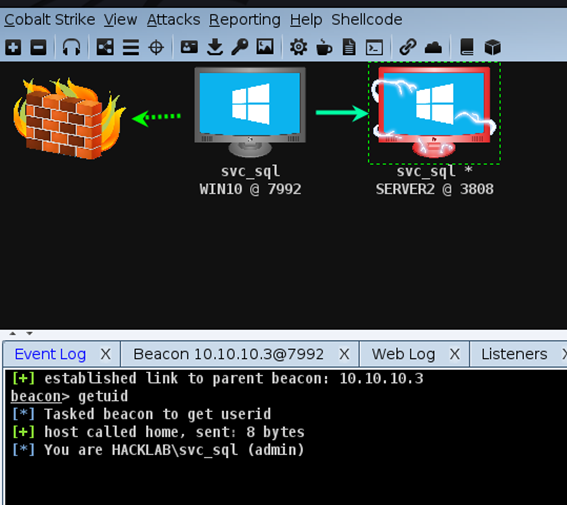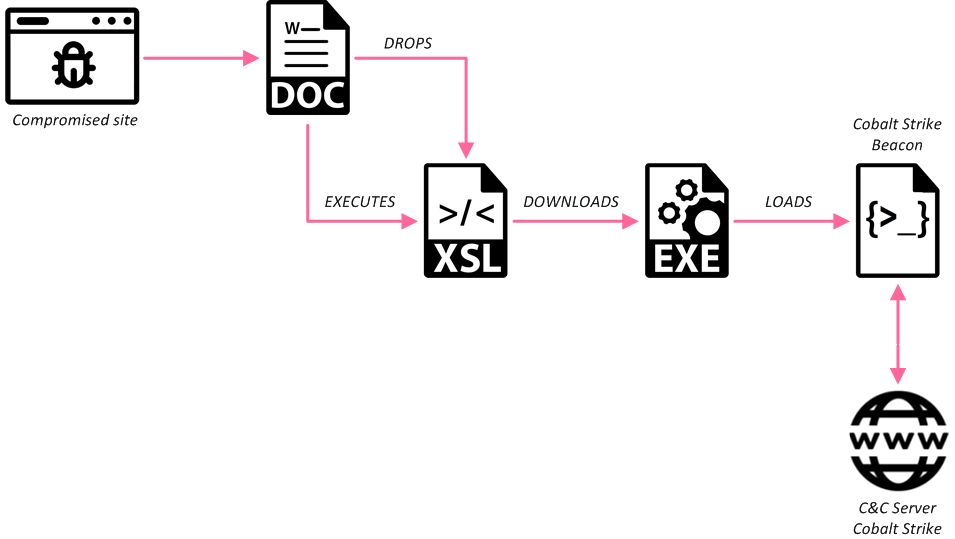
The other and more common configuration for an active attack is an interval of 1-5 minute checkins for a quicker operational tempo (a 5-day engagement vs. Long haul beacons are specifically configured to evade Digital Forensics and Incident Response (DFIR). Current tradecraft suggests using at least one beacon in "long haul" mode, with check-ins of several hours to days or weeks apart. The check-in interval for beacons varies, and is dependent on the expected sophistication of the target and the goals of the attacker. An attacker will determine through reconnaissance and intelligence gathering which methods are likely to work, and pre-configure their malware payloads to utilize those which will bypass common firewall rulesets. The important thing to note here is that common whitelisting and blacklisting techniques often fail against a sufficiently advanced adversary since they use important common services like Twitter as their communication channel for C2. The malware reaches out to pre-configured accounts for new instructions maybe a special file on Dropbox or new tweets on a Twitter account.Įach protocol has its own advantages and disadvantages. While beaconing may use common services like Twitter or Dropbox, it is NOT using those services as intended.

A few examples include HTTP/S, SSH, DNS, SMTP, and cloud services like Dropbox, Google sheets, Gmail, and Twitter. There are numerous communication protocols that can be used for C2. How frequently the malware checks in, and what methods it uses for this communication are typically configured by the attacker. The C2 server hosts instructions for the malware, which are then executed on the infected machine after the malware checks in. What Is Beaconing?īeaconing is when the malware communicates with a C2 server asking for instructions or to exfiltrate collected data on some predetermined asynchronous interval. This will not be an exhaustive list of tactics, techniques, and procedures (TTPs), but rather a small sample for education and training purposes. The purpose of this post is to investigate common Command & Control (C2) network traffic signatures, as well as identifying methods to evade blue team (network defenders) pattern analysis.
#Cobalt strike beacon getting caught for mac#
Empire utilizes native PowerShell on Windows systems and Python for Mac (yes, there is malware for Mac). To demonstrate one of the common and sometimes sophisticated attack characteristics, beaconing capabilities and indicators, I’ll be using Adaptive Empire, a PowerShell and Python Remote Access Tool (RAT). Custom RATs are expensive, and there is no sense wasting your Cadillac toolkit on a low priority target. The "dumbing down" of tradecraft is something we've seen nation states do in order to preserve their more advanced tactics, techniques, and procedures should an advanced incident response get involved.

Adversary sophistication varies broadly, as some adversaries are incredibly advanced nation-states, while others are attackers of opportunity with less sophisticated tools, skillsets, and organization.įurther confusing the matter, some highly advanced adversaries will “dumb down” their tradecraft for less sophisticated targets.

As the Director of Offensive Security Services at Critical Insight, a core part of my job is to understand the adversaries that threaten our clients, and then emulate those threats during penetration testing exercises.


 0 kommentar(er)
0 kommentar(er)
